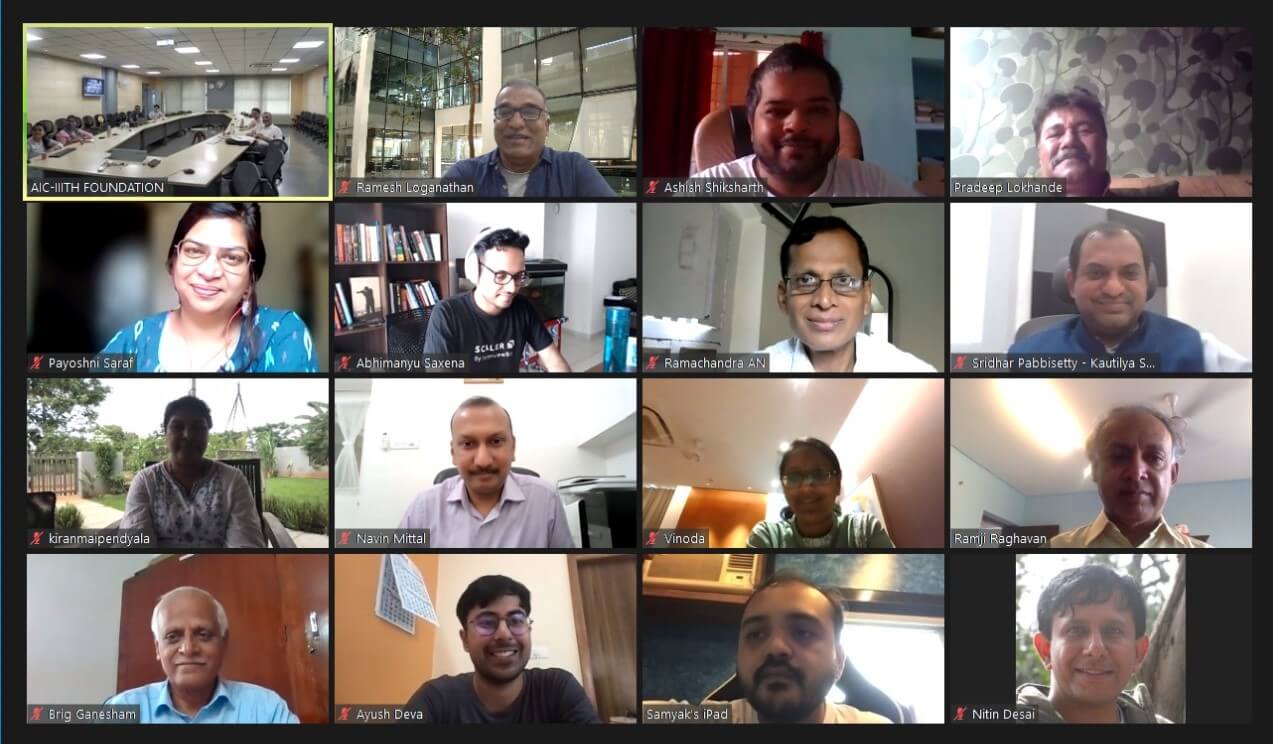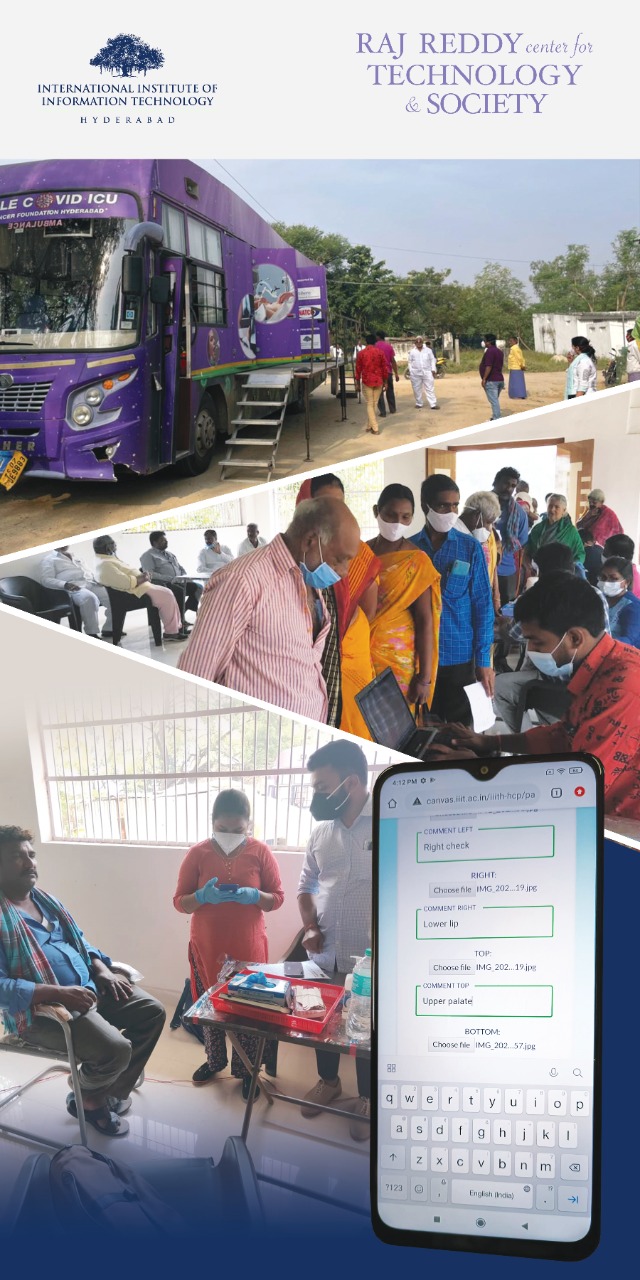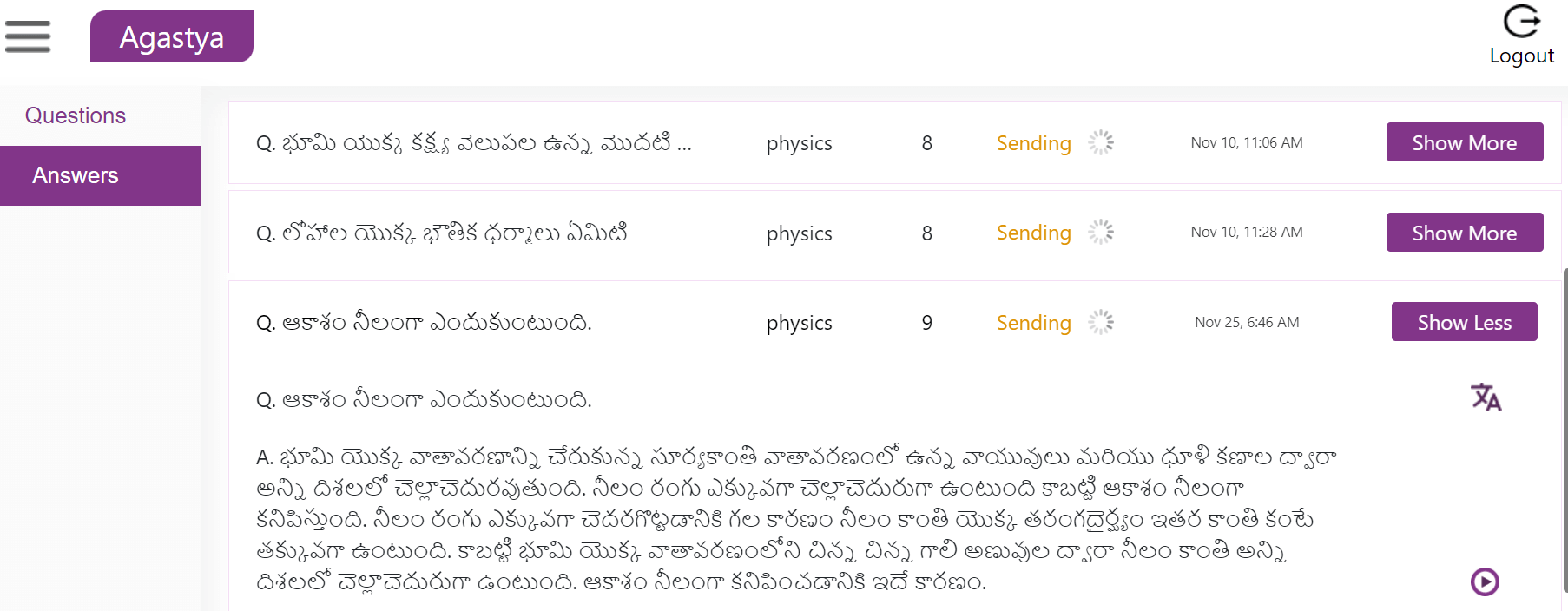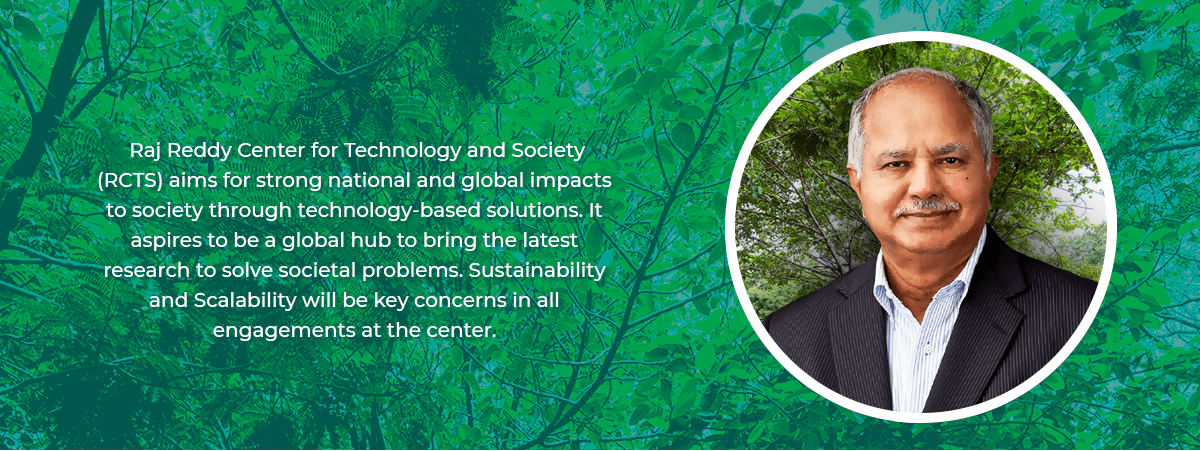IIITH’s Raj Reddy Center for Technology and Society (RCTS) is leading the way toward a tech-savvy rural India. A think-tank is going glocal, percolating the essence of emerging technologies in public health and grassroot education, to solve societal problems at the base of the socio-economic pyramid.
Low income rural communities across India face area-specific challenges that require a local perspective. Can modifications tailored for their circumstances be scalable to billions of the underprivileged? While NGOs are doing path-breaking work in marginalized communities, its augmentation is limited by factors such as lack of access to the latest studies and technology and reliance on under-qualified volunteers.
IIITH’s Raj Reddy Center has taken on the gargantuan task of evaluating challenges in the rural economy and identifying drivers of change. The Center is named after Dabbala Rajagopal (Raj) Reddy, one of the early pioneers of Artificial Intelligence and Robotics, who served on the faculty of Stanford and Carnegie Mellon for over 50 years. The Indian-American computer scientist won the Turing Award, recognized as the Nobel Prize of Computer Science, for his significant contribution to the field of Artificial Intelligence.
Sustainability and Scalability of technology-guided indigenized solutions lie at the core of the Center’s philosophy.
The need to bridge the urban-rural chasm
One positive spinoff of the pandemic was the rapid proliferation of mobile phones and telecommunication devices into the base of the pyramid (BoP) communities. India’s digital divide is narrowing, with private and public-sector action aggressively promoting digital infrastructure in rural India and the penetration of internet services to new customers. Lower-income states are in fact, showing the fastest growth in internet infrastructure.
Rural healthcare and education are two core drivers that RCTS is currently focused on, with collaborative projects to create a sequentially-linked amplification of impact. They aim to empower the scattered rural geographies and create social value by enhancing the productivity of existing resources and talent with data-driven interventions. Access to technology research institutions like IIITH will help leverage emerging and futuristic technologies (including AI, Virtual Reality, and others) to harness the untapped indigenous potential.
Immediate needs and the Round Table Meetings
“Roundtables are a way to connect with the extended ecosystem and derive roadmaps for the Center”, explains Prof. Ramesh Loganathan. A discussion on ‘AI & Emerging Tech for Grassroots school education post-pandemic’ saw policy makers, grassroot educators, AI researchers, social scientists and innovators spotlight the challenges in the rural education sector and find glocal solutions for the ‘New Normal’.

A round table on ‘Technology to address the last mile in Healthcare’ examined gaps in rural healthcare and explored cost effective Medicare models and tech-based solutions (AI, devices, ++) to provide quality doorstep healthcare at scale. Viiveck Varma, Advisor to the Center and round table facilitator pointed out that, “Our endeavor is to harness the intersection of Technology and Social Impact in a manner benefiting communities at large”.

First steps to bring healthcare to the doorsteps
The Raj Reddy Center will facilitate solutions like tele-medicine and remote consultation for the workflow models of various healthcare NGOs, to ease the shortage of doctors in rural areas. The Center has already teamed up with leading not-for-profit organizations like Care India to facilitate end-to-end projects in health, education, livelihoods and disaster management.
A cancer screening application that IIITH has developed for the Grace Cancer Foundation will help in the early detection of cancer and aims to connect rural patients through electronic records and create pathways for a referral system for follow-up treatment. A Primary Healthcare Data Collection platform will create a unified database of patient case histories for end-to-end medical treatment. The generic medical screening platform and database will help state health departments to organize specific health screening drives.

A simple mobile app in a village can now help the patient with disease detection and monitoring long term treatment. The Rashtriya Bal Hriday Yojana, for instance, is a screening app for young children with a heart condition, connected to a central database of patient case details. Under the aegis of Anemia Mukt Bharat initiative, the Raj Reddy Center is designing AI models for anemia screening.
Education democratized
Rural schoolchildren in remote communities were the most affected during the pandemic. RCTS has entered into collaborations with leading NGOs to understand the esoteric needs of different geographies and help them with home-grown solutions by local innovators. The “Virtual IoT Labs” is one such initiative that enables remote access of the lab, through a combination of technologies. IIITH has also partnered with the Telangana state machinery to provide an Innovation hub at the school level.
The IIITH Center has designed “Ask Agastya”, a speech interface application for Agastya International Foundation, a Bangalore-based NGO. The learning platform allows underprivileged students to gain access to knowledge at any time, with a non-smart mobile phone and voice network.

Shorter attention span and content overload are challenges that the 21st century learner faces. IIITH’s researchers have seen good results with the Gamification of the learning process; engaging the learner and keeping him invested with a creative system of points, badges, and other visual progress mechanisms.
The Pravaha Foundation and Raj Reddy Center are collaborating to identify, educate and mould gifted children from disadvantaged rural backgrounds to become the change-makers of the future. Starting humble, with one school in Telangana, the project has scaled up to 15 new campuses, with plans to reach out to over 100 million school children over a 5-year period.
Project Nirmaan is targeting children, women and farmers from diverse backgrounds in 8 states of India. The game plan is to create social leaders with education, skill development & entrepreneurship. In its 15 years of operation, the 1000+ team of employee – volunteer network has impacted over 1 million lives through 12 flagship programs and social leadership initiatives.
The Center’s initial model validated more to do
Continuous review is fundamental to the Center’s modus operandi. Embedded tools and systems are being designed to deploy ML frameworks that identify metrics on multiple parameters. As the instructors’ aide, AI will evaluate the effectiveness of intervention programs and track student progress, with case-specific recommendations.
The bottom-line at the Raj Reddy Center is to create a critical mass of thinkers, enablers and doers to directly empower the on-ground working entities, to broaden their reach and bring technology-aided benefits to the vast swathe of Rural India.



Next post